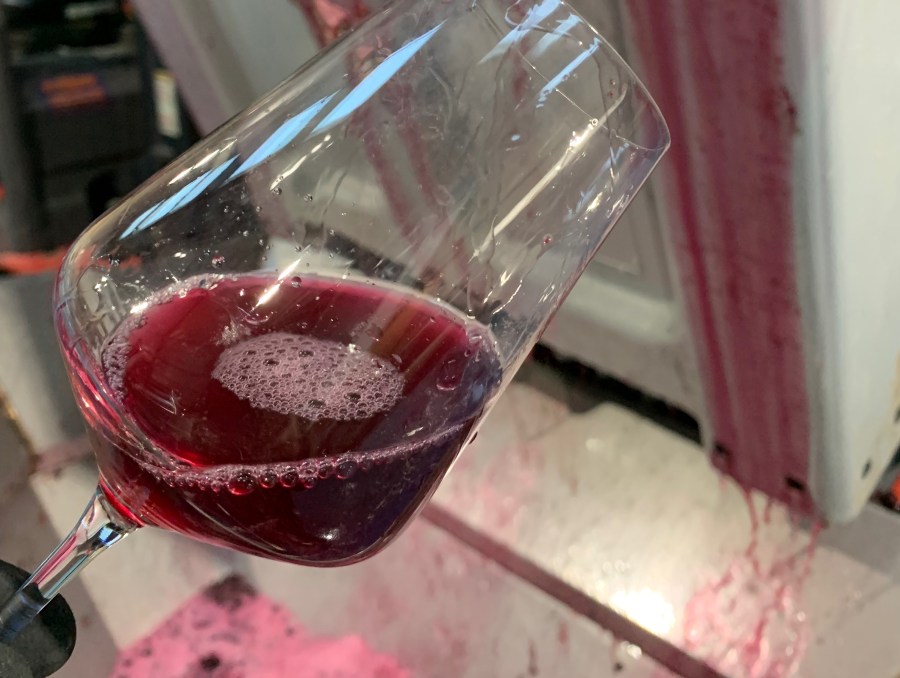This is probably the most important topic connected with many aspects in winemaking: the overall oxidation-reduction management.
It is a multifaceted subject very complex and strictly related with all the following points:
Grape disease, picking method, pressing, gas blanketing, turbidity, fermentation, lees contact, metals, élevage and ageing, storage conditions, vessel type, microbiological activities, low intervention winemaking, organic and biodynamic wines, finning, filtration, dissolved oxygen, temperature, pumping, bottle filling, corking/capping and closure specification.
There is so much to know, (and a lot unknown), in oxidation management that we could cover an entire year with it.
At the moment I will only focus on the most important practical aspects of these two incredible natural additives.
As usual, there isn’t a single way of using them and all depends on conditions and purpose. However, the basic criteria that make the difference, are quite constant. While tasting wines it still surprises me that most of the issues in the UK wines are related to oxidation-reduction management. I’m afraid to say: too many of those wines are medal winners…
When to use SO2 and tannins?
The best moment to use them is obviously when needed: this depends on the purpose, style and the status of the wine.
I’ll make some generalisations, however, let’s keep in mind that some wines are quite unique. I stopped using SO2 in juice about 8 years ago for various reasons, such as: use of tannins, yeast inoculation management, pressing criteria, gas blanketing, ethanal production and levels of SO2 in finished wines.
On my trials, gallic tannins have been the number one choice in juice: they act faster than SO2, they last a shorter period of time, don’t suffer the influence of sugar content, pH (less than SO2), and certainly they don’t bind ethanal like the SO2 does in the initial steps of alcoholic fermentation. On the other side, tannins lower the glycerol production and the control of microorganisms is minimum at the commonly used ratios.
My first sulphur dioxide addition for white and rosé wines, usually happen soon after the alcoholic fermentation once the wine is tested dry in the lab: my favourite quick 15 minute test is reducing sugars by Fehling.
For red wines, I prefer to delay the first SO2 addition a few weeks to allow some ethanal production for colour and tannins stabilisation in the early stages, as well as delaying malolactic fermentation (MLF) for a few months. By delaying MLF a better colour stabilisation can be achieved and less ethanal in the finished wine; although, that is a different topic.
Together with the first SO2 addition, I also add tannins for the second time. At this stage, I often use a mix of gallic, condensed and ellagic tannins.
After four year trials on three different wines, some tannins did surprisingly well compared with the test which only had SO2 added.
Let’s remember that there are many different kinds of tannin each with a unique target. Even the same kind of tannin from assorted suppliers can act differently for various reasons.
Based on how much SO2 has been added the first time, the second addition may have to take into account even more of the following aspects: pH, temperature, alcohol content, turbidity, vessel type, volume, ullage, blanketing… and ultimately: the target.
From this stage onward, the only SO2 that should be considered is the molecular fraction, not the free or total, (with some exceptions).
The bound SO2, largely in the long term, gives us information about the oxidative status, age and how the wine has been managed.
By using sulphur dioxide and tannins, it’s possible to use less SO2, although it’s not applicable to every wine and trials must be made.
How to use SO2 and tannins?
I often suggest one single “big first addition” of sulphur dioxide, (50ppm to 70 ppm), instead of a few small ones, to get full advantage of the temporary higher amount of free molecular SO2 which is less related to the pH for a few hours. There is no risk of overdosing at this stage if done with the right criteria. From the second addition onward the molecular SO2 is crucial and the level can be decided based on purpose, storage time and conditions (0.6 to 1.2ppm for different applications). Above 1ppm, can become detectable on the nose but if the wine is not going to be sold, it’s perfectly fine for storage especially if we’re planning to delay our checks. Criteria for tannins are more complex: testing, trials and tasting experience are required, especially when getting closer to bottling.
Looking for a UK based independent consultant winemaker?
I’ve been in the UK for 10 years offering my experience and I’d be happy to discuss your project.
+39 3349 769 839




